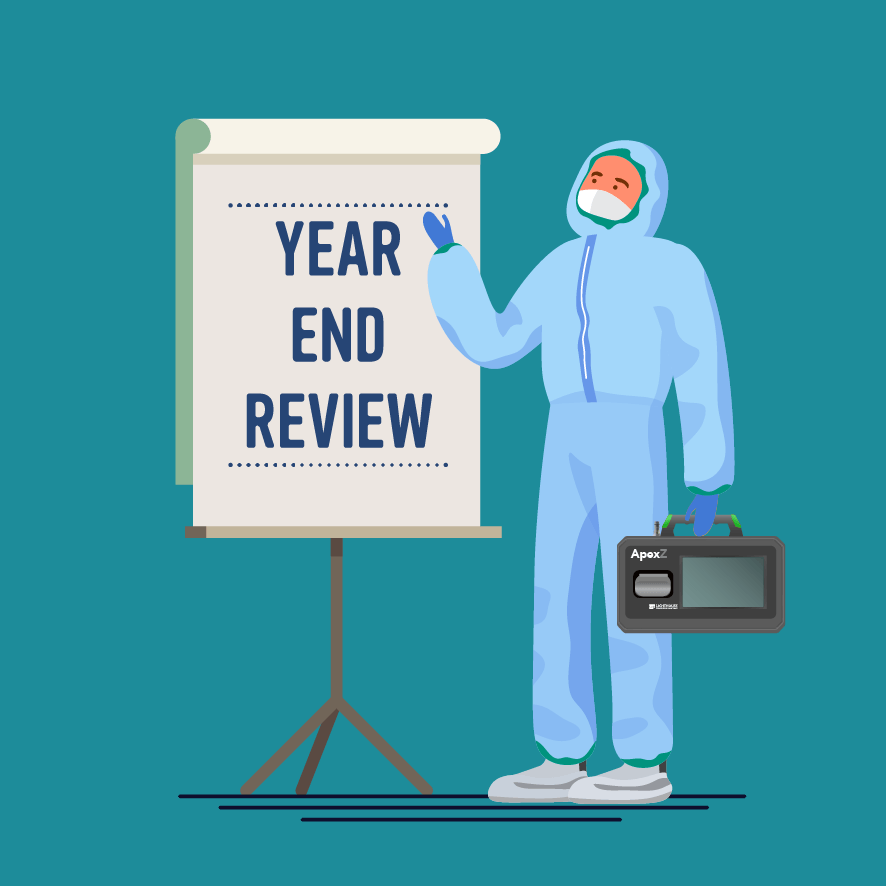At the start of 2022, we outlined some trends we expected to see grow in popularity and necessity throughout the year. They included paperless cleanrooms, advanced self diagnostics, multiple transfer options, and smart batteries. Now, as 2022 comes to a close, we want to consider how these trends have played out in the last year through the lens of larger shifts we saw in the industry.
GMP Annex 1 2022 Update
One of the biggest events of the year was the update for GMP Annex 1, outlining a new vision for pharmaceutical cleanrooms at a minimum, and an additional indicator of a much larger shift industry wide.
In this update, we see a few major changes. The first is a shift towards people-less cleanrooms. We know that humans are the primary contaminator of cleanrooms, and GMP Annex 1 does not disguise this. It instead emphasizes a technology driven cleanroom, centered around Quality Risk Management (QRM) through a comprehensive Contamination Control Strategy (CCS), which is best integrated through design, not as an afterthought. Annex 1 does this while simultaneously promoting higher standards for personnel knowledge and training. This emphasis is indicative of another major shift in the industry: the transition to Industry 4.0 and Pharma 4.0.
Industry 4.0 & Pharma 4.0
Industry 4.0 and Pharma 4.0 signify the next industrial revolution. While this has been a topic of discussion since 2015, COVID-19 spurred rapid changes to slow moving industries over the last 4 years. Now, the labor shortage is showing the importance of automation, robots, machines, AI, and other advanced technologies more than ever.
But Industry 4.0 and Pharma 4.0 are not designed to eliminate humans in the workplace. Instead, they are focused on agility, speed, and empowerment through automation, information access, and interconnectivity. GMP Annex 1 shows these themes through the emphasis it places on personnel knowledge in and out of the cleanroom, as well as a focus on traceable automation wherever possible.
While an interconnected, empowered workforce in cleanrooms could present unstoppable advances for technology and pharmaceuticals, it is also an important safety factor. Automation that is predictable and traceable allows for maximum automation of audits, process control, and safety control. It also eliminates the number one cause of contamination in cleanrooms: humans.
Did Our Predicted Trends Pan Out In 2022?
When we look at the impact of the new GMP Annex 1 update and the popularization of Industry 4.0 and Pharma 4.0 principles through the introduction of new legislation and market factors, we do see the trends we predicted as heavily prevalent.
First and foremost, paperless cleanrooms are going to soon be considered a necessity. Paper poses a large threat to cleanrooms – even cleanroom paper – and presents logistical nightmares. Paper based systems present awkward art projects and stumbling blocks for automation. Someone has to retrieve a printed ticket, rip it out of the machine, tape or paste it to a report, photocopy the report, sign it off, and scan it in for an electronic copy. Then someone gets the lucky job of manually entering the day.
In a continuous monitoring scenario, this simply is not feasible. By the time anomalies are noted, contamination has gone too far. With the introduction of the new GMP Annex 1 and the popularization of Industry 4.0, we have seen an increase in demand for paperless particle counters in cleanrooms not yet utilizing them and we expect this to continue until particle counters that use paper are obsolete.
The following three trends we predicted (advanced self diagnostics, multiple transfer options, and smart batteries) were not as obvious in people’s needs, but they still lend themselves admirably to the demand created by the Annex 1 update and Industry 4.0. They are indicators of advanced particle counters designed for automation and smart cleanrooms developed around minimal human interaction and QRM with a comprehensive CCS.
How To Stay On Top Of The Industry
As we prepare for 2023, we are already looking ahead based on the trends we saw this year and what we anticipate to come next year. This includes introductions of new or changes to current regulations and guidelines, as well as general cleanroom operators’ existing and latent needs. In our Knowledge Center, we provide breakdowns of complex topics, including regulations and the science behind how cleanrooms work, along with posting industry forecasts and trends.
The good news is that it is all free!
For over 40 years, we have been the world’s clean air experts and now our goal is to pass that knowledge on to you, so you can be the smartest person in the room. You can be the expert on cleanrooms, clean air, and particulate contamination. All you need to do is make a free account and get started studying.


